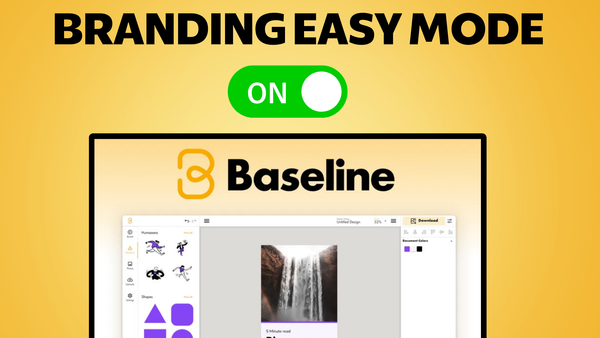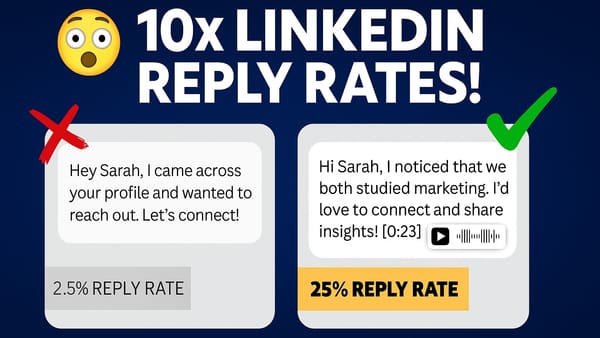WordPress Media Library Explained & Favorite Media Plugins [WPME 12/16]
Master WordPress Media Library: Learn essential features, best practices, and top plugins for efficient media management on your website
![WordPress Media Library Explained & Favorite Media Plugins [WPME 12/16]](/content/images/size/w1200/wordpress/2020/04/wordpress-media-library.jpg)
Introduction
The WordPress Media Library is a crucial component of any WordPress website, serving as the central hub for managing all your media files, including images, audio, documents, and even videos. This comprehensive guide explores the ins and outs of the WordPress Media Library, providing valuable insights into its functionality, best practices for usage, and recommended plugins to enhance your media management experience.
In this article, we’ll delve into the core features of the WordPress Media Library, including how to upload and organize files, edit images, and optimize your media for better website performance. We’ll also discuss common issues users face and provide solutions to overcome them. Additionally, we’ll introduce you to some powerful plugins that can extend the capabilities of your Media Library, making it easier to find and use the perfect media for your content.
Whether you’re a beginner just starting with WordPress or an experienced user looking to streamline your media management workflow, this guide will equip you with the knowledge and tools to make the most of your WordPress Media Library. Let’s dive in and explore how to effectively manage your media assets, optimize your workflow, and create a more visually appealing and engaging website.
Understanding the WordPress Media Library
The WordPress Media Library is an essential feature that allows users to manage all the media files uploaded to their website. It serves as a centralized repository for images, audio files, documents, and even video files, although uploading large video files directly to WordPress is not generally recommended without proper optimization.
Key Features of the WordPress Media Library
- Centralized storage: All media files are stored in one place, making it easy to access and manage them.
- Easy uploading: Users can drag and drop files directly into the Media Library or use the “Add New” button to browse their computer for files.
- Organization options: Files can be organized by date, making it easier to find specific items.
- Image editing: Basic image editing tools are available directly within the Media Library.
- Attachment details: Each media file has associated metadata, including titles, captions, and alternative text.
Accessing the Media Library
To access the WordPress Media Library:
- Log in to your WordPress dashboard
- Navigate to the left-hand sidebar
- Click on the “Media” option
- Select “Library” to view all uploaded media files
Adding New Media
There are multiple ways to add new media to your WordPress site:
- Drag and drop: Simply drag files from your computer directly into the Media Library interface.
- Add New button: Click the “Add New” button at the top of the Media Library page and select files from your computer.
- Within content: When creating or editing a post or page, you can add media directly from the content editor.
Viewing Options
The Media Library offers two viewing options:
- List view: Displays media files in a list format with detailed information about each file.
- Grid view: Shows thumbnails of media files in a grid layout, providing a more visual representation of your media.
Maximizing Upload Size for Media Files
One common issue WordPress users face is the limited upload size for media files. By default, WordPress often has a maximum upload size of 10MB, which can be restrictive for larger files such as high-resolution images or audio files.
How to Increase Maximum Upload Size
- Ask your host: Many hosting providers can increase the upload limit upon request.
- Cloudways users: If you’re using Cloudways hosting:
- Log into your Cloudways account
- Go to “Settings and Packages”
- Look for the “Upload Size” option
- Adjust the value as needed (e.g., 256MB)
- Save the changes
Benefits of Increasing Upload Size
- Flexibility: Allows for uploading larger files without compression or splitting.
- Higher quality media: Enables the use of higher resolution images or longer audio files.
- Improved workflow: Reduces the need for external file compression or splitting before uploading.
Considerations When Increasing Upload Size
- Server resources: Larger files consume more storage space and may impact server performance.
- Load times: Bigger files can increase page load times, affecting user experience and SEO.
- Bandwidth usage: Increased file sizes may lead to higher bandwidth consumption.
Exploring Media Library Features
The WordPress Media Library offers a range of features to help users manage and optimize their media files effectively. Understanding these features can significantly improve your workflow and the overall organization of your media assets.
Attachment Details
When you select a media file in the library, you’ll see a sidebar with various options and information:
- Title: The name of the file, which can be edited for better organization.
- Caption: A short description that can be displayed with the media when inserted into content.
- Alternative Text (Alt Text): Important for accessibility and SEO, describing the image for screen readers and search engines.
- Description: A longer explanation of the media file, useful for internal organization.
- URL: The direct link to the media file, which can be copied for sharing or linking.
- Dimensions: For images, shows the width and height in pixels.
- Upload date: Displays when the file was added to the Media Library.
Image Editing Tools
WordPress provides basic image editing capabilities directly within the Media Library:
- Resize: Adjust the dimensions of an image while maintaining aspect ratio.
- Crop: Cut out portions of an image to focus on specific areas.
- Rotate and Flip: Change the orientation of an image.
- Scale: Reduce the overall size of an image while maintaining proportions.
Organizing Media Files
While WordPress automatically organizes files by upload date, you can improve organization by:
- Using descriptive file names: Rename files before uploading to make them easier to find later.
- Adding detailed metadata: Fill in titles, captions, and descriptions for better searchability.
- Creating a consistent naming convention: Develop a system for naming files that makes sense for your workflow.
Bulk Actions
The Media Library allows for bulk actions on multiple files:
- Delete: Remove several files at once.
- Edit: Apply changes to multiple files simultaneously.
- Download: Get a zip file containing selected media files.
Enhancing Media Library with Plugins
While the default WordPress Media Library is functional, several plugins can enhance its capabilities and streamline your media management workflow. Here are some recommended plugins to consider:
Happy Files
Happy Files is a plugin designed to improve the organization of your WordPress Media Library.
Key Features:
- Custom folders: Create a folder structure to organize your media files.
- Drag and drop: Easily move files between folders.
- Quick filtering: Quickly find files by selecting specific folders.
- Integration: Works seamlessly with the default WordPress media upload process.
Benefits:
- Improved organization: Especially useful for sites with large numbers of media files.
- Time-saving: Reduces time spent searching for specific files.
- User-friendly: Intuitive interface that’s easy for all team members to use.
Pexels Free Stock Photos
This plugin integrates the Pexels stock photo library directly into your WordPress Media Library.
Key Features:
- Direct search: Search for stock photos without leaving WordPress.
- One-click import: Add stock photos to your Media Library with a single click.
- High-quality images: Access to Pexels’ extensive library of professional stock photos.
Benefits:
- Time-saving: No need to download and re-upload stock photos.
- Cost-effective: Access to free, high-quality stock photos.
- Seamless integration: Works within the existing Media Library interface.
Stencil
While not free, Stencil is a powerful tool for creating custom images directly within WordPress.
Key Features:
- Template library: Access to pre-designed templates for various purposes.
- Stock photo integration: Search and use stock photos directly in your designs.
- Text and graphic tools: Add text, icons, and other design elements to your images.
- WordPress integration: Create and edit images without leaving your WordPress dashboard.
Benefits:
- Professional designs: Create polished graphics without advanced design skills.
- Consistency: Maintain a consistent visual style across your site.
- Efficiency: Streamline the process of creating featured images and other graphics.
Best Practices for Media Library Management
Effective management of your WordPress Media Library is crucial for maintaining an organized and efficient website. Here are some best practices to help you make the most of your media assets:
Optimize Images Before Uploading
- Resize images: Adjust image dimensions to the largest size needed on your site.
- Compress files: Use tools like ImageOptim or TinyPNG to reduce file sizes without significant quality loss.
- Choose the right format: Use JPEGs for photographs, PNGs for graphics with transparency, and SVGs for logos and icons.
Use Descriptive File Names
- Be specific: Use clear, descriptive names that indicate the content of the file.
- Include keywords: Incorporate relevant keywords in file names for better SEO.
- Use hyphens: Separate words with hyphens for better readability (e.g., “wordpress-media-library-guide.jpg”).
Implement a Consistent Naming Convention
- Develop a system: Create a standardized naming convention for all media files.
- Include relevant information: Consider including date, category, or project name in file names.
- Be consistent: Apply the naming convention across all media files for easier organization.
Regularly Clean Up Your Media Library
- Remove unused files: Delete media files that are no longer in use on your site.
- Archive old content: Consider archiving older media files that aren’t currently needed but may be useful in the future.
- Use plugins: Implement plugins like Media Cleaner to help identify and remove unused media files.
Utilize Alt Text and Captions
- Write descriptive alt text: Provide clear, concise descriptions of images for accessibility and SEO.
- Use captions strategically: Add captions to images when additional context or information is beneficial to the reader.
Implement a Backup Strategy
- Regular backups: Ensure your media files are included in your regular WordPress backups.
- Cloud storage: Consider using cloud storage solutions for an additional layer of backup.
- Version control: Keep track of different versions of important media files.
Key Takeaways
The WordPress Media Library is a powerful tool for managing and organizing your website’s media assets. By understanding its features and implementing best practices, you can significantly improve your workflow and enhance the overall quality of your website.
Key points to remember:
- Centralized management: The Media Library provides a single location for storing and accessing all your media files, making it easier to maintain and organize your content.
- Customization options: Take advantage of the built-in editing tools to resize, crop, and adjust images directly within WordPress, saving time and reducing the need for external editing software.
- Organization is crucial: Implement a consistent naming convention, use descriptive file names, and consider using plugins like Happy Files to create a more structured media organization system.
- Optimize for performance: Always optimize images before uploading by resizing and compressing them to ensure fast loading times without sacrificing quality.
- Enhance with plugins: Extend the functionality of your Media Library with plugins like Pexels for free stock photos or Stencil for creating custom graphics directly within WordPress.
- Accessibility and SEO: Make use of alt text and captions to improve accessibility for all users and boost your site’s SEO performance.
- Regular maintenance: Implement a routine for cleaning up unused media files and maintaining an organized library to ensure optimal performance and easier content management.
- Backup strategy: Always include your media files in your regular WordPress backups to protect against data loss.
By implementing these strategies and making full use of the WordPress Media Library’s features, you can create a more efficient, organized, and visually appealing website. Remember that effective media management not only improves your workflow but also contributes to a better user experience and improved search engine performance.
As you continue to work with WordPress, keep exploring new tools and techniques to enhance your media management skills. Stay updated with the latest plugins and best practices in the WordPress community to ensure you’re always making the most of your Media Library and creating the best possible content for your audience.




